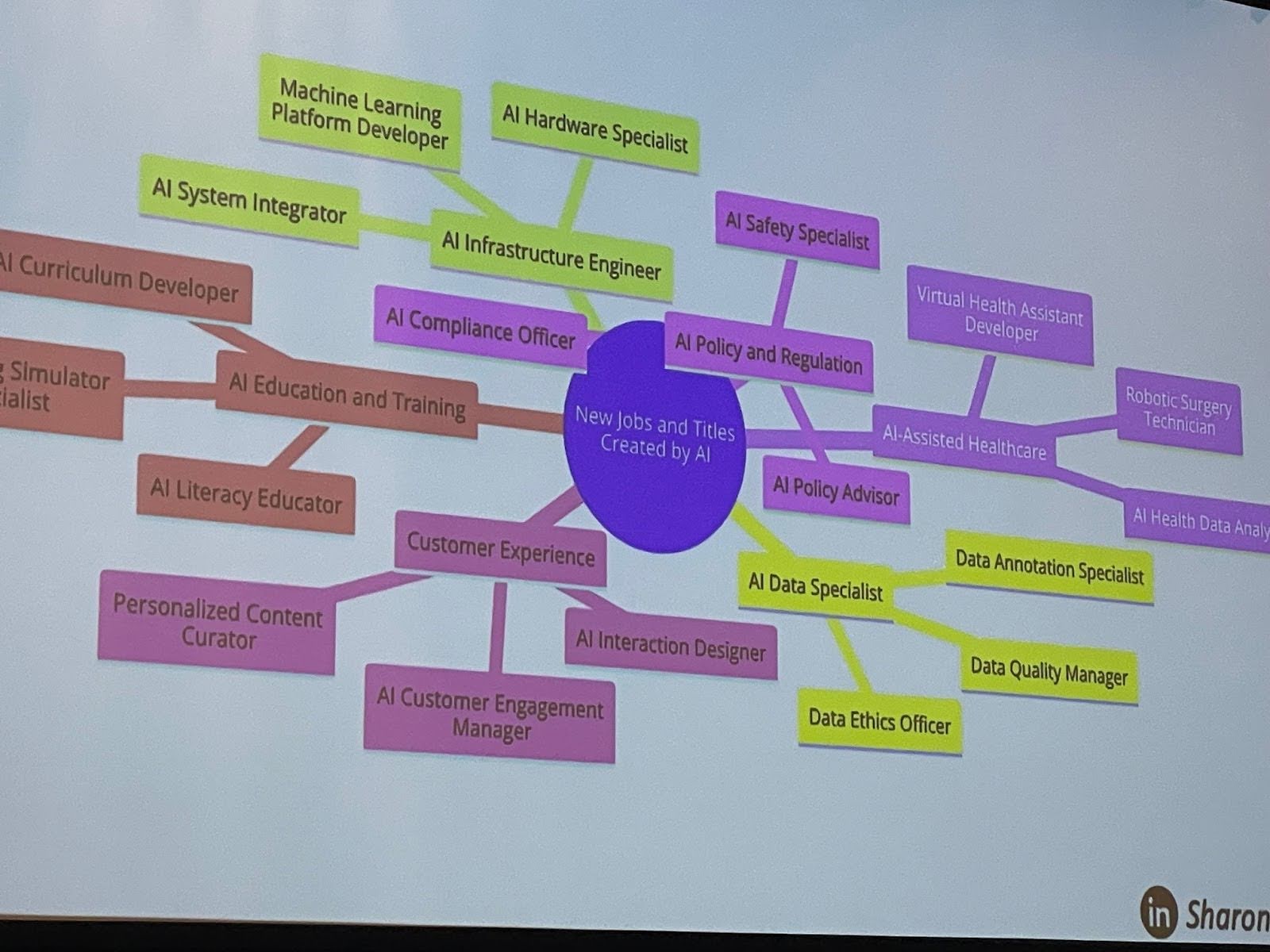4 Takeaways from the Texas Digital Government Summit Keynote on AI*
 Whether we’re ready or not, the Age of AI has begun. Everyone seems to be using Gen AI tools to optimize their existing processes and organizations are either building AI solutions or partaking.
Whether we’re ready or not, the Age of AI has begun. Everyone seems to be using Gen AI tools to optimize their existing processes and organizations are either building AI solutions or partaking.
So it wasn’t a surprise that the agenda for the 2024 Texas Digital Government Summit was packed with AI talks, including the opening keynote by Sharon Gai.
Here are our key takeaways from the keynote, “Leading the AI Revolution: IT’s New Role in Global Public Sector Innovation.”
1. AI Technology is not new…we’ve been using AI for a long time now because there are different types.
Narrow AI or Weak AI – Every time you go with the recommended internet search suggestion, you are using Narrow AI. Narrow AI is very limited and can only perform specific tasks within a set domain such as an internet search or facial recognition. Siri, Alexa, and chatbots are examples of narrow AI.
General AI or Strong AI – This type has the ability to take knowledge from one domain and transfer it to another like how a human can apply experience gained from doing one task to other tasks. It can problem-solve and react to unknown situations. It is also known as Artificial General Intelligence (AGI). Think Terminator….we’re not there yet.
Generative AI or Gen AI – I like to think of this as the TL;DR AI as it has the ability to summarize and abbreviate based on learned patterns from existing data. It can create new content like music videos or this image from this prompt:
Everyone is talking about Gen AI tools like ChatGPT these days because it has gotten significantly better. However, it’s still limited to the specific domain they were trained on so it is not considered General or Strong AI.
2. AI adoption by government agencies and the public sector is not new
My favorite part about the keynote is how Gai provided several case studies of how various agencies around the world have been using AI technology to improve the lives of their constituents. I especially liked the example of how a police force in Australia used AI (facial recognition) to fight organized retail crime (ORC) and how a student liked the encouraging and “positive” attitude bestowed on them by Khanmigo, Khan Academy’s AI tutor.
Extreme care and regard was taken to roll out AI initiatives successfully. For example, Finland began preparing its citizens in the late 2010’s through a combination of education, skills development, research and innovation, and public engagement.
3. Three Questions to Ask Yourself When Thinking AI Adoption
For government agencies…
- How can we use it?
- How can we use it for our constituents?
- How can it be regulated?
Wondering where to plug-in AI to optimize work or where to get started…
- What’s the creative part of this function?
- What’s the repetitive part?
- What can I outsource?
4. Your Existing Teams Will Look Very Different
Perhaps this was the biggest takeaway for me. As AI technology improves and adoption rates rise, the workforce is going to evolve.
There will be tasks that will be done by AI assistants or agents, which will allow humans to focus on more strategic, critical-thinking work.

Leaders will be managing humans as well as maintaining AI agents.

New jobs specific to building, supporting, and maintaining AI will emerge.

Have you started leveraging Gen AI across your organization? Check out our AI solutions or, tell us about your experience so far in the comments below.
*This article was written mostly by a human with some help from ChatGPT

Leave a Reply